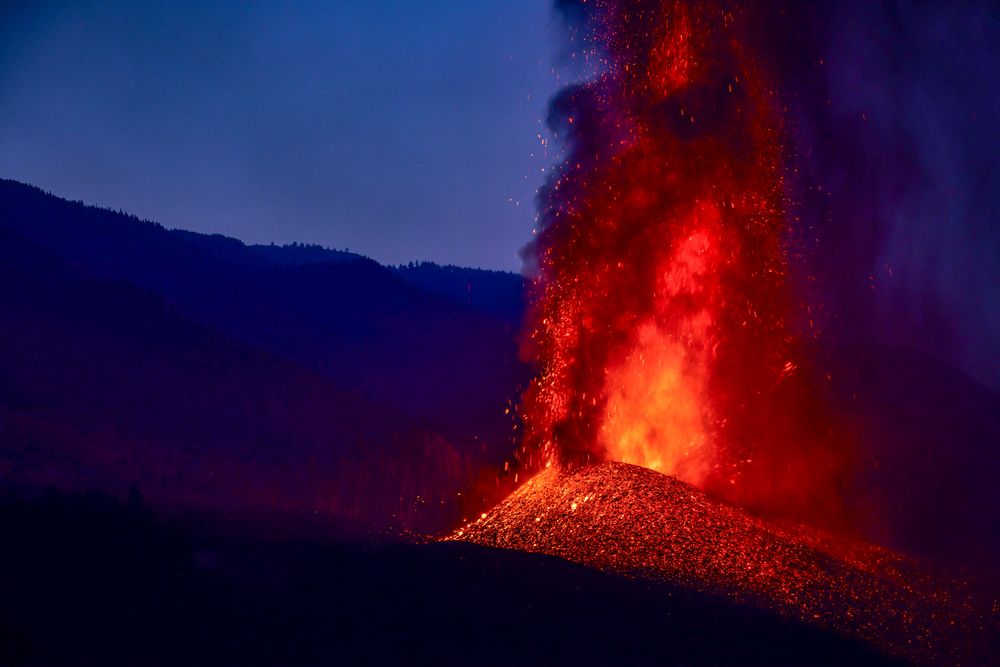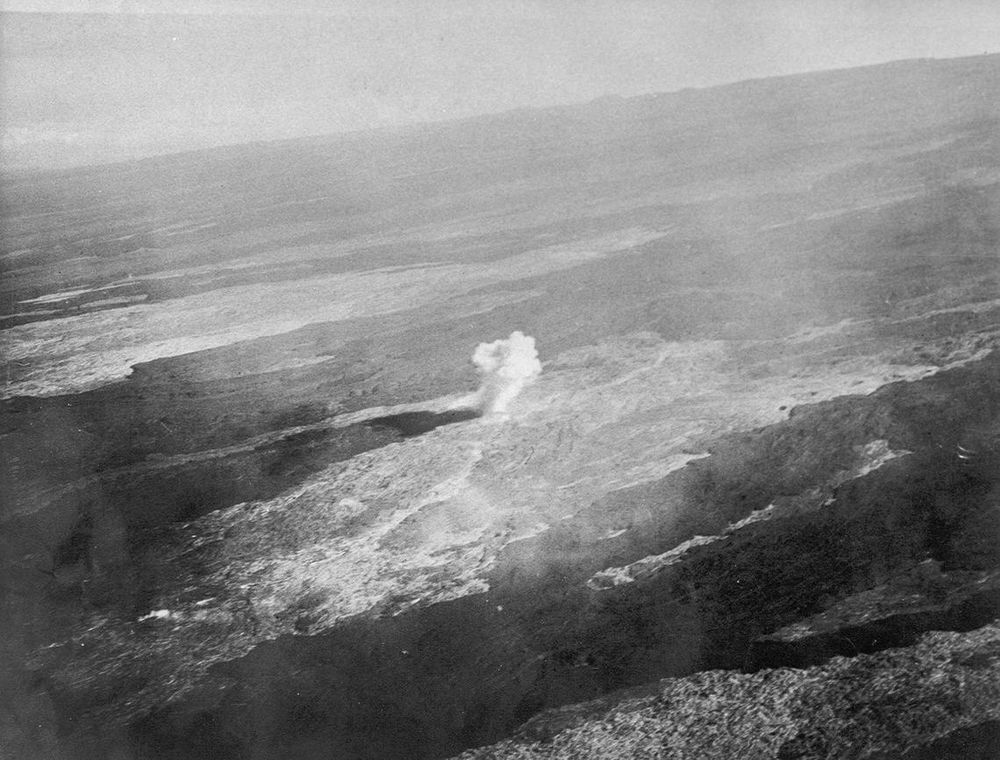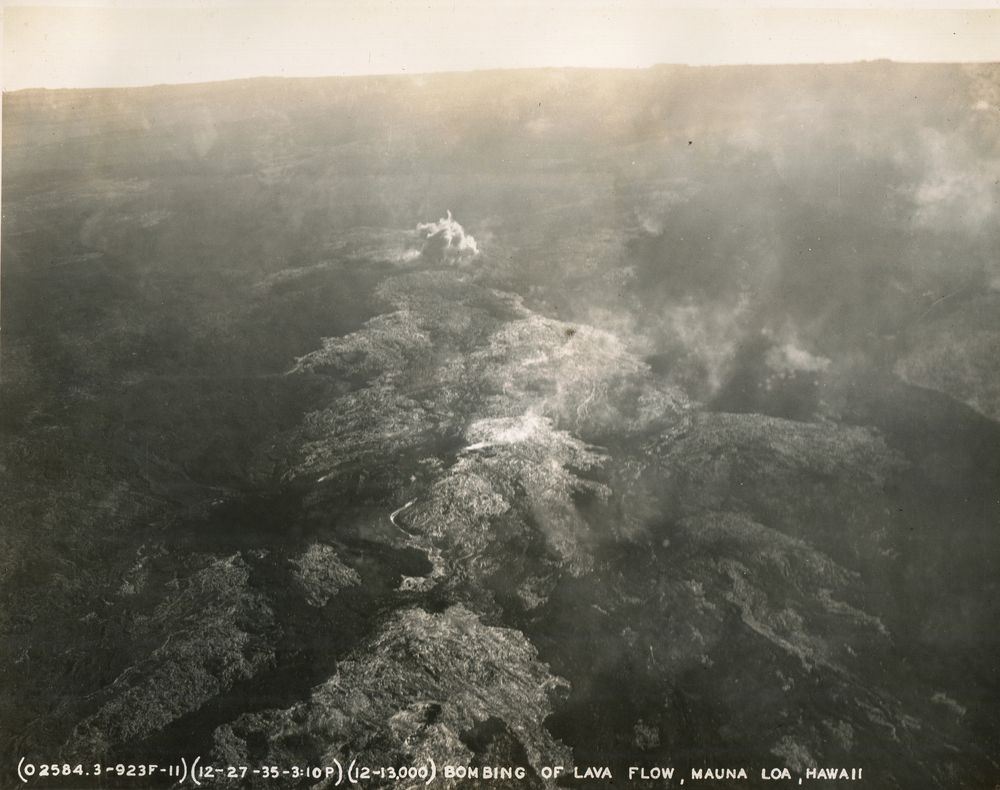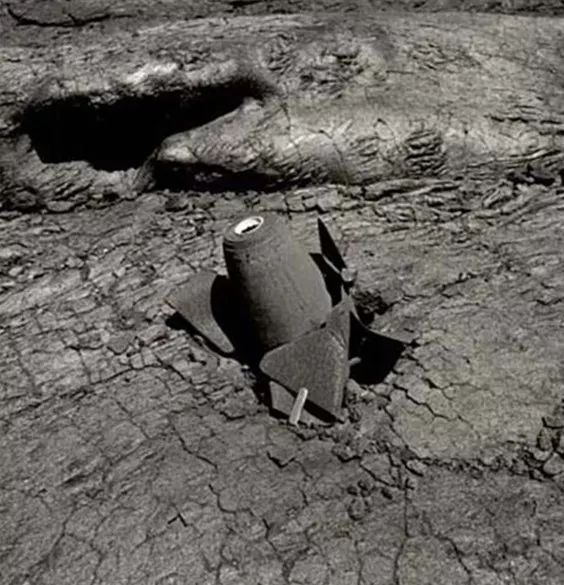The Cumbre Vieja volcano in the Spanish island of La Palma in the Canary Islands began erupting in September 2021, and has been doing so for the past two months. Lava flow from the eruption has covered nearly a thousand hectares, destroyed more than 2,600 buildings, and displaced some 7,000 people from their homes.
With no signs of stopping, Casimiro Curbelo, the president of the municipal council of La Gomera, a neighboring island, has suggested that perhaps the lava flows could be diverted away from populated regions through more extreme measures, such as by getting a plane to bomb them.

Eruption of the Cumbre Vieja volcano in La Palma. Photo: Gabriel Trujillo | Dreamstime.com
“Isn’t there a plane that flies and can drop... today the technology is very reliable... and boom! And send the lava in a different direction?” he told reporters in a radio interview. “Maybe it’s madness, but I get the impression from a technological point of view that it should be attempted.”
As crazy as Curbelo’s idea sounds, he’s not the first one to suggest it. In fact, it has already been tried before.
It was 1935 and Hawaii's Mauna Loa volcano was erupting with lava flows inching dangerously close to the town of Hilo, then home to 16,000 residents. Thomas Jaggar, the founder and first director of the U.S. Geological Survey’s Hawaiian Volcano Observatory, called on the Army Air Corps and Lieutenant Colonel George S. Patton to send military planes to detonate bombs near the eruptive vent. The idea was not to destroy the volcano or stop its eruption, which was impossible anyway, but to cause the rocky channels and underground tunnels the lava was following toward Hilo to collapse, and thus divert the impending danger.

Aerial view of a bomb detonating on Mauna Loa on the morning of December 27, 1935. Photo: Army Air Corps
On Dec. 27, a small squadron of Keystone B3 and B4 biplanes flew over the lave flows and dropped a cluster of bombs “with astounding technical accuracy”. Half of these bombs were packed with 355 pounds of TNT. The other half were merely smoke bombs so the pilots could see where the explosive bombs landed.
Six days later, the eruption ended and Thomas Jaggar declared the operation a success. He announced that the bombing, "helped hasten end of the flow,” and that, “in a natural end, the lava would not cease so abruptly.”
However, others were skeptic. “Several bombs had missed their targets, and the ones that did hit their marks did not appear to cause the sort of topographical changes,” writes Robin George Andrews for National Geographic. “The 1935 flow did not stop immediately, but rather waned over the course of days, and did not change paths dramatically,” cites National Park Services. Howard Stearns, a USGS geologist, who was on board the last plane to deliver bombs believes that the stopping of the eruption was sheer coincidence.
A similar operation was attempted in 1942 on Mauna Loa during another of its eruption. That time, the purpose was to quench the light emitting from the exploding volcano; it being the middle of World War 2, the Army chief was concerned that the brightly glowing lava might help enemy flyers navigate. Much like its predecessor, the explosion did not appear to have a significant effect on the flow of lava, says Hannah Dietterich, a geophysicist at the USGS Alaska Volcano Observatory.

Aerial photo of the bombing of the 1935 Mauna Loa eruption. Photo: Army Air Corps
Despite the doubtful success of previous endeavors, the possibility of using air power to divert lava flows should they threaten population centers continued to be discussed. In the 1975 and 1976, scientists dropped a multitude of massive bombs on Mauna Loa’s ancient lava formations to investigate which features succumbed to modern bombing technologies. Spatter cones, which are volcanic mounds built up on top of a vent or fissure emitting profuse amounts of lava, were confirmed to be vulnerable to collapse, suggesting they could be targeted in the future.
In 1983, during a smaller eruption of Mount Etna, engineers went on on foot to plant the explosives, sliding them into small tubes dug out next to the lava channels. Unfortunately, the lava was so hot that engineers feared that if they loaded the tubes with charge, the heat from the lava would cause the explosives to explode prematurely. The engineers sprayed water into the tubes to cool them down, but that caused dramatic temperature fluctuations that deformed the lava channel, causing molten rock to spill over the sides even before explosives could be deployed.

An unexploded bomb dropped on the Mauna Loa 1935 flow, rediscovered and photographed in 1977 by Jack Lockwood.
When Mount Etna erupted again in 1991, engineers tried a different approach. They called the US military and asked them to drop not bombs but large concrete blocks over a lava tube in an attempt the crush the tube and stop its flow. But that proved to be a fruitless attempt. So engineers went back to explosives. First, a dump truck carved a relatively safe path up the lava-strewn mountain. Then teams painstakingly scraped away material from the side of a lava tube, to make openings, and plant explosives. Nearly 8 tons of explosives were placed. This time the explosion carved a huge hole in a major lava channel. Most of the lava drained out of this hole into a series of artificial channels, where it cooled and hardened, saving the town of Zafferana Etnea, and its population of 9,500 people.
So can we use bombs to divert the lava flows from the ongoing Cumbre Vieja volcano? Unlikely, according to Arianna Soldati, a volcanologist at North Carolina State University.
“You need to be able to divert it to somewhere where there is nothing—no private property, no infrastructure, nothing,” says Soldati. In the case of Cumbre Vieja volcano, eruptive fissures opened right next to people’s houses, making any use of explosives to divert that lava reckless.
References:
# Robin George Andrews, “Why the U.S. once bombed an erupting volcano”, National Geographic
# Robin George Andrews, “The Army Bombed a Hawaiian Lava Flow. It Didn’t Work”, The New York Times
# “1935 Eruption of Mauna Loa”, National Park Service
# Aristos Georgiou, “Politician Proposes Bombing La Palma Volcano As Eruptions Enter 38th Day”, Newsweek



Iceland has, quite a bit more successfully, used seawater on lava flows to harden them and create diversion dams. I don't know how much of an effect the water temperature has on this technique,but it shouldn't be too much (33 degree vs 75 degree water compared to lava temp (1400 to 2100 degrees). This might work to protect coastal towns.
ReplyDelete